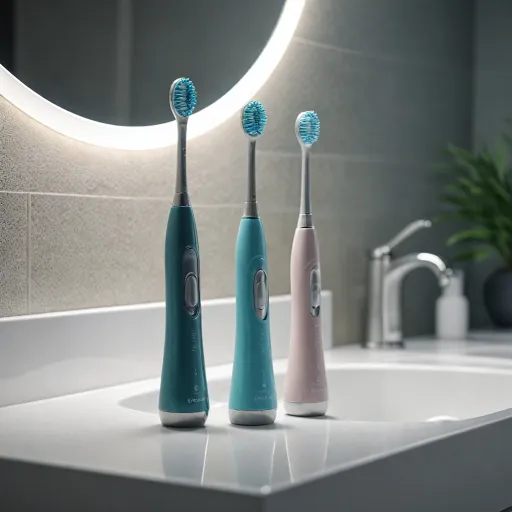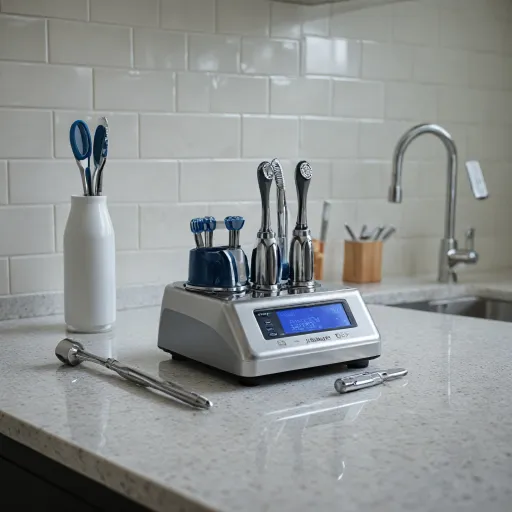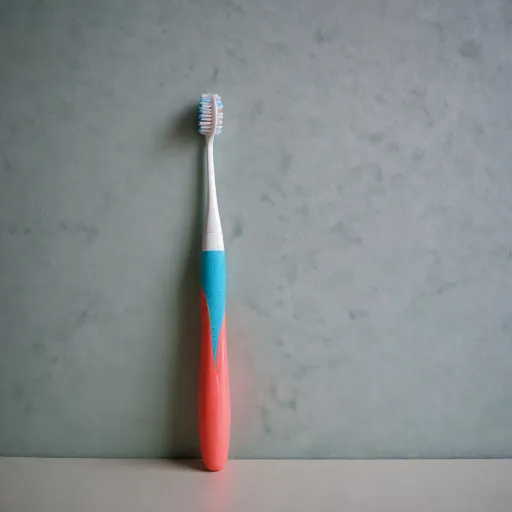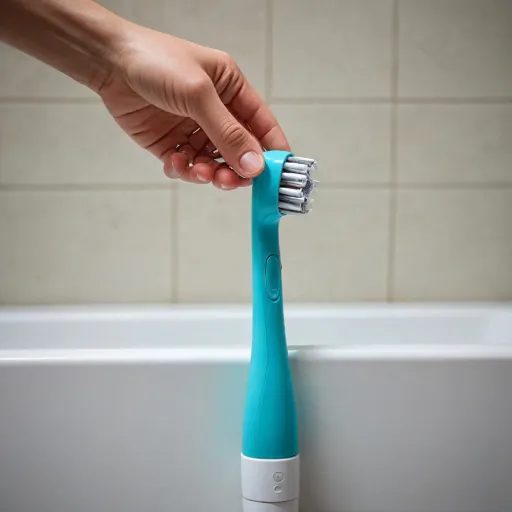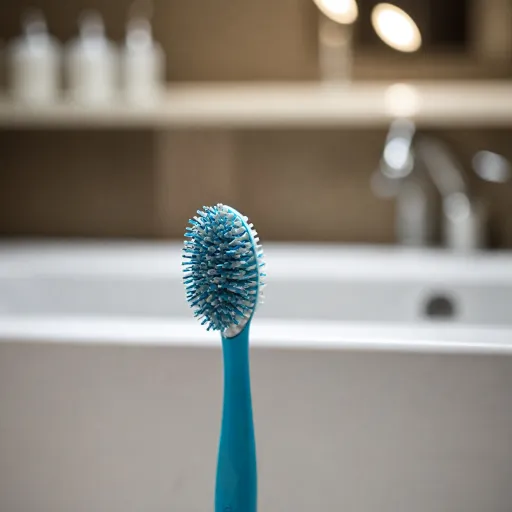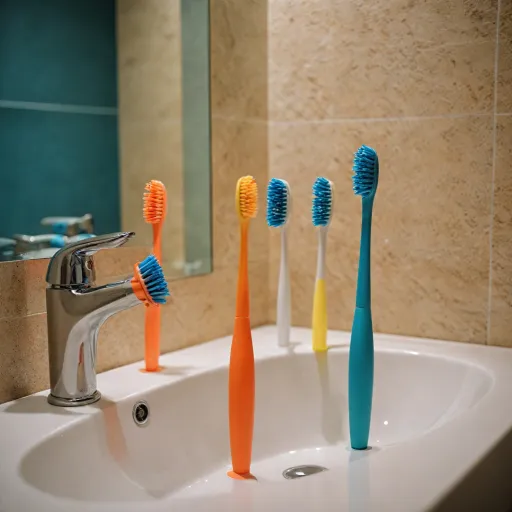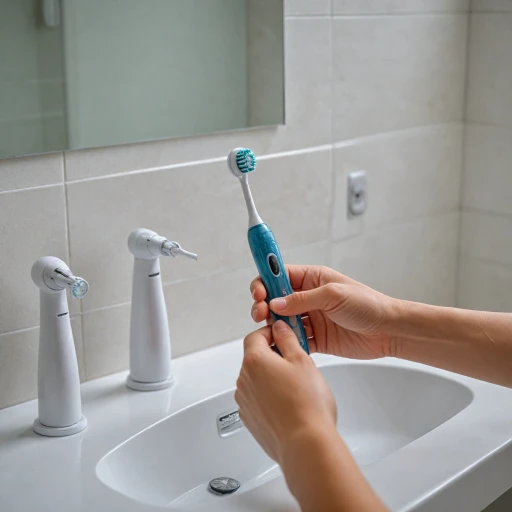
Understanding periodontal disease and oral hygiene needs
Why gum health matters in periodontal disease
Periodontal disease, often called gum disease, is a chronic condition that affects the gum tissue and supporting structures of the teeth. It can lead to gum recession, tooth loss, and even impact overall health if not managed properly. People with periodontal disease need to pay special attention to their oral hygiene routines, as regular brushing and cleaning are crucial for controlling plaque and bacteria that contribute to gum inflammation and recession.
Oral hygiene needs for sensitive gums and receding tissue
When gums are sensitive or receding, using the right electric toothbrush becomes even more important. Manual brushing can sometimes be too harsh, especially if too much pressure is applied. Electric toothbrushes, especially those with pressure sensors and soft brush heads, help reduce the risk of further gum damage. Features like gentle cleaning modes and specialized brush heads are designed to support gum health and minimize irritation.
- Electric toothbrushes with pressure sensors alert you if you’re brushing too hard, protecting sensitive gum tissue.
- Brush heads designed for sensitive teeth or gums can help prevent discomfort and further recession.
- Consistent and thorough cleaning is easier to achieve with electric models, which can be especially helpful for those managing gum disease.
Maintaining your electric toothbrush is also key for optimal oral health. Regularly cleaning and replacing brush heads ensures effective plaque removal and reduces the risk of bacterial buildup. For practical tips on keeping your toothbrush in top shape, check out this guide on effective ways to maintain your electric toothbrush.
As you explore the best electric toothbrushes for gum health, keep in mind that the right features and proper technique can make a significant difference in managing periodontal disease. The next sections will cover which features to prioritize, brushing techniques for sensitive gums, and how popular models like Philips Sonicare and Oral-B compare for those with gum recession or dental hygiene concerns.
Key features to consider in an electric toothbrush for gum health
Essential Elements for Protecting Gums and Preventing Recession
When searching for the best electric toothbrush for gum health, especially if you have periodontal disease or receding gums, it’s important to focus on features that support gentle yet effective cleaning. The right toothbrush can make a significant difference in your oral health routine, helping to reduce plaque and protect sensitive gum tissue from further damage.
- Pressure sensors: These are crucial for anyone with gum recession or sensitive gums. Pressure sensors alert you if you’re brushing too hard, which can prevent further gum damage and recession. Many top models, like the Oral Genius and Philips Sonicare series, include this feature.
- Soft brush heads: Look for toothbrushes that offer soft or extra-soft brush heads. These are gentle on gums and help avoid irritation or injury to delicate gum tissue. Brands like Sonicare ProtectiveClean and Oral Series often provide a variety of brush heads designed for sensitive teeth and gums.
- Multiple cleaning modes: Electric toothbrushes with modes such as "gum care," "sensitive," or "clean" allow you to tailor your brushing experience. These modes use different speeds and vibrations to ensure thorough cleaning without being harsh on your gums.
- Timer and quadpacer: Built-in timers help ensure you brush for the dentist-recommended two minutes, while quadpacers encourage even cleaning across all areas of your mouth. Consistent, thorough brushing is key for maintaining dental hygiene and preventing gum disease.
- Compatibility with specialized brush heads: Some electric toothbrushes are compatible with brush heads designed specifically for gum health, plaque removal, or sensitive teeth. This flexibility lets you adapt your toothbrush to your changing oral health needs.
For those interested in advanced cleaning technology, understanding the benefits of an ultrasonic teeth cleaner can also be helpful. Ultrasonic devices can offer an extra layer of plaque removal, which is beneficial for people managing gum disease.
Choosing an electric toothbrush with these features can help you maintain optimal oral health, reduce the risk of gum recession, and support your dental hygiene routine. In the next section, we’ll look at the best brushing techniques for sensitive gums and how to use your toothbrush effectively for gum disease management.
Brushing techniques for sensitive gums
Gentle Techniques for Protecting Sensitive Gums
When dealing with periodontal disease or gum recession, the way you use your electric toothbrush matters just as much as the features it offers. Brushing too hard or using the wrong technique can worsen gum tissue damage and increase sensitivity. Here are some practical tips to help you get the best results for your oral health:
- Let the brush do the work: Modern electric toothbrushes, especially those with pressure sensors, are designed to clean effectively without extra force. Applying too much pressure can cause toothbrush receding issues and aggravate sensitive gums.
- Use the right brush head: Choose soft or extra-soft brush heads, such as those found in the Philips Sonicare ProtectiveClean or Oral Series models. These are gentle on gum tissue and help reduce irritation while still removing plaque.
- Angle matters: Hold the brush head at a 45-degree angle towards the gum line. This allows the bristles to reach under the gum margin, where plaque and bacteria often accumulate, supporting gum health and preventing further recession.
- Short, gentle movements: Instead of scrubbing back and forth, guide the electric toothbrush slowly along each tooth. Let the sonic or oscillating action do the cleaning. This approach is especially helpful for those with sensitive teeth or receding gums.
- Follow the timer: Most electric toothbrushes include a built-in timer to ensure you brush for the recommended two minutes. This helps ensure thorough cleaning without overbrushing any one area, which can lead to gum damage.
For more in-depth guidance on brushing techniques that protect your gums and fight gum disease, check out this resource on how to choose the right electric toothbrush for gingivitis.
Remember, the best electric toothbrush for gum health is only as effective as your brushing habits. Consistency, gentle technique, and the right features—like pressure sensors and soft brush heads—are key to maintaining dental hygiene and supporting your oral health journey.
Comparing popular electric toothbrush models for periodontal disease
How Leading Electric Toothbrushes Support Gum Health
When it comes to managing periodontal disease, choosing the right electric toothbrush can make a significant difference in your oral health routine. Several models stand out for their features designed to protect sensitive gums, reduce plaque, and prevent gum recession. Here’s a look at how some of the most popular electric toothbrushes compare for those with gum disease or receding gums.| Model | Key Features | Best For |
|---|---|---|
| Philips Sonicare ProtectiveClean |
Sonic technology Pressure sensor Gum care mode Brush head replacement reminder |
Sensitive teeth Gum recession Gentle cleaning |
| Oral-B Genius Series |
Oscillating-rotating action Pressure sensors Multiple brush heads Real-time feedback via app |
Plaque removal Customizable brushing Dental hygiene tracking |
| Philips Sonicare Gum Health |
Specialized gum care brush head Multiple intensity settings Sonic cleaning Long battery life |
Gum tissue care Gentle cleaning Daily oral health maintenance |
| Oral-B Pro Series |
3D cleaning action Pressure sensor Sensitive mode Affordable replacement heads |
Budget-conscious users Sensitive gums Effective plaque control |
What Sets These Toothbrushes Apart?
- Pressure sensors: Essential for those with receding gums or gum disease, these sensors alert you if you’re brushing too hard, helping protect delicate gum tissue.
- Specialized brush heads: Look for soft bristles and heads designed for gum health. Options like the Sonicare ProtectiveClean and Oral-B’s sensitive brush heads are gentle on gums while still effective at cleaning teeth and removing plaque.
- Multiple cleaning modes: Toothbrushes with dedicated gum care or sensitive modes allow for a customized brushing experience, reducing the risk of further gum recession.
- Real-time feedback: Some models, especially in the Oral-B Genius series, connect to apps that guide your brushing technique, ensuring thorough cleaning without excess pressure.
Choosing the Best Electric Toothbrush for Your Needs
Selecting the best electric toothbrush for gum health depends on your specific oral health needs. If you have sensitive teeth or are prone to gum recession, prioritize models with pressure sensors and soft brush heads. For those focused on dental hygiene and plaque control, oscillating-rotating models with multiple cleaning modes may be ideal. Always consider the compatibility of replacement brush heads and the availability of features that support gentle, effective cleaning. Consulting with your dental professional can help you match your oral care routine with the right electric toothbrush features, ensuring you protect your gums and maintain optimal oral health.Expert recommendations and dentist insights
What dental professionals say about electric toothbrushes for gum disease
Dental experts consistently highlight the importance of using the right electric toothbrush for individuals with gum disease or gum recession. According to the American Dental Association, electric toothbrushes with soft brush heads and built-in pressure sensors can help prevent further damage to sensitive gum tissue. These features are especially important for those with receding gums, as excessive pressure during brushing can worsen gum recession and lead to additional oral health issues.
Key features recommended by dental hygienists
- Pressure sensors: Many dental professionals recommend electric toothbrushes equipped with pressure sensors. These sensors alert users when they are brushing too hard, protecting delicate gums and helping maintain healthy gum tissue.
- Soft brush heads: Hygienists suggest using soft or extra-soft brush heads, such as those found in the Philips Sonicare ProtectiveClean or Oral-B Gum Care series. These are gentle on sensitive gums and effective at removing plaque without causing irritation.
- Multiple cleaning modes: Adjustable cleaning modes, especially those designed for sensitive teeth and gums, are often advised. This allows users to customize their brushing experience based on their current oral health needs.
- Timer and pacer features: Built-in timers and quadrant pacers help ensure thorough cleaning of all areas, which is crucial for managing gum disease and maintaining dental hygiene.
Insights from clinical studies and dental associations
Research published in dental journals shows that electric toothbrushes, particularly those with sonic technology like Philips Sonicare, are more effective at reducing plaque and improving gum health compared to manual toothbrushes. The oscillating-rotating technology found in models such as the Oral-B Genius series has also been shown to help reduce gum inflammation and bleeding. These findings support the advice from dental professionals to invest in a quality electric toothbrush with features tailored to gum health.
Expert tips for choosing and using your electric toothbrush
- Replace brush heads every three months or sooner if bristles are frayed to ensure optimal cleaning and minimize irritation to gums.
- Use gentle, circular motions and avoid scrubbing aggressively, as recommended by dental hygienists.
- Look for models with rechargeable batteries and waterproof designs for convenience and durability.
- Consult with your dental care provider to determine which features are best for your specific oral health needs, especially if you have a history of gum disease or sensitive teeth.
Maintaining your electric toothbrush for optimal results
Keeping your electric toothbrush in top shape
Proper maintenance of your electric toothbrush is essential for supporting gum health, especially if you are managing periodontal disease or gum recession. A well-maintained toothbrush ensures effective plaque removal, gentle cleaning for sensitive gums, and prolongs the life of your device.- Replace brush heads regularly: Most dental professionals recommend changing your brush head every three months, or sooner if the bristles appear frayed. Worn bristles can reduce cleaning efficiency and may irritate gum tissue, especially if you have receding gums or sensitive teeth.
- Clean the handle and brush head: After each use, rinse the brush head thoroughly under running water to remove toothpaste and debris. Wipe the handle with a damp cloth to prevent buildup. Some models, like the Philips Sonicare ProtectiveClean or Oral Series, have detachable heads for easier cleaning.
- Keep the charging base dry: Moisture can cause mold or mildew to develop around the charging base. Place your electric toothbrush in a well-ventilated area and wipe the base regularly.
- Monitor pressure sensors: Many electric toothbrushes, such as those with pressure sensors or the Oral Genius series, alert you if you’re brushing too hard. Ensure these features are functioning properly, as excessive pressure can worsen gum recession and damage gum tissue.
- Store your toothbrush upright: Allowing the brush head to air dry helps prevent bacterial growth. If you use a travel case, make sure the brush head is completely dry before storing.




